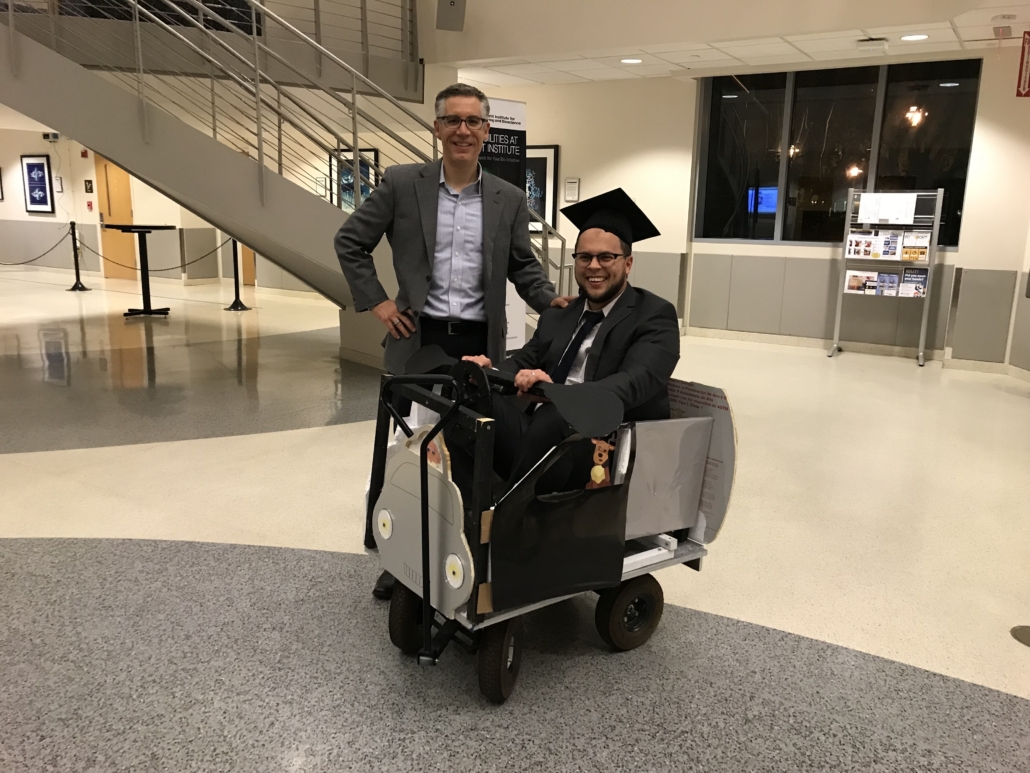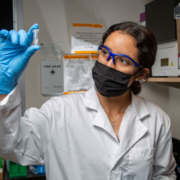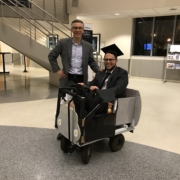
Dr. Corey Landry successfully defended his Ph.D. thesis this fall. His work focused on developing new methods for high throughput single cell analysis throughout intact human brain organoids!
Abstract: Human brain organoids, three-dimensional spheres of human induced pluripotent stem cells (hiPSCs), have become widely used as a model system to study human neurodevelopment in recent years. Specifically, the model of intact (i.e., unsliced) brain organoids could present an ideal system for studying synaptic activity, spontaneous oscillations, and connectivity of developing neuronal networks in self-assembled tissues – opening the door to previously inaccessible windows of human neurodevelopment. As a gold standard single cell method, whole cell patch clamp is a critical tool in unraveling the physiology of neural tissues. In addition to capturing the millivolt- and millisecond-scale dynamics of neuronal cells, patch clamp also provides direct physical access to single cells in intact tissues allowing for the delivery and extraction of molecules such as dyes or genes. Critically, the delivery of intracellular dyes via patch clamp recording enables multidimensional characterization of single cells, including relationships between cellular structure and function. Despite this potential, the challenges of performing single cell studies in human brain organoids are substantial and have limited progress in this field. This work addresses these problems first by developing a method for cleaning and reuse of patch clamp pipettes that increases the throughput, scalability, and reproducibility of patch clamp recordings and second by developing a suite of methods for performing patch clamp measurements in intact human brain organoids. The result of this work is a set of scalable methods for patch clamp recordings and morphological reconstruction in intact brain organoids.






